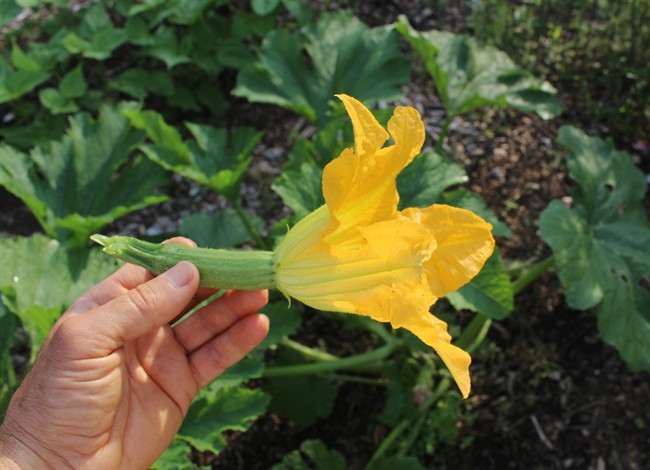Truman Capote famously told friends that the very wealthy eat better vegetables – tiny ones. So there’s another plus for gardening: It’s easier to eat the way the super-rich do.

Not that smaller is always better in the world of vegetables. A cucumber picked undersize does not taste better than one allowed to swell up before harvest – as long as that full-size one is picked before its skin yellows and seeds start to harden.
Similarly, the taste of baby carrots can’t compare with fully grown ones, unless the “baby” size is how big the carrots are supposed to be when fully mature. A certain degree of maturity is needed before a carrot can store energy – which translates to sweetness – in its fleshy roots. Some varieties of carrots, such as Caracas and Atlas, never grow large; when mature and tasty, the roots are still no more than a few inches long.
“Baby carrots” that you buy in the supermarket, incidentally, are not actually babies, but are full-size carrots cut into smaller pieces.
MANY WAYS TO BABY VEGETABLES
There’s no arguing that tiny vegetables are more fun and convenient to eat. That must be what accounts for the popularity of supermarket cherry tomatoes.
The bulk of these, unfortunately, are the variety Red Cherry, which doesn’t taste nearly as good as Sungold, which has a delectable sweet-tart flavour.
- Gas prices surge in some parts of Canada. What’s causing pain at the pumps?
- ‘She gets to be 10’: Ontario child’s heart donated to girl the same age
- Bird flu risk to humans an ‘enormous concern,’ WHO says. Here’s what to know
- Buzz kill? Gen Z less interested in coffee than older Canadians, survey shows
Miniature cauliflower – “minicauli” – is another tiny vegetable that is fun and convenient. This one tastes pretty much the same as full-size cauliflower. The way to grow minicaulis is by planting out any variety of cauliflower at a 6-inch spacing each way and letting competition among the plants keep them dwarf as they mature.
BETTER BECAUSE THEY ARE BABIES
Of course, tiny vegetables’ main draw is their perceived gustatory superiority. And it’s true: Many vegetables are most delicate, tender and tasty at this stage.
Fine examples of vegetables that reach gustatory perfection early in their growth are zucchini and other summer squashes. You can even pick zucchinis before their blossoms have wilted and been shed, eating the tasty blossoms along with the fruit.
Every gardener knows how fast a zucchini can grow from the size of a carrot to that of a baseball bat. A few days’ delay in harvest rapidly plumps up zucchinis and the wallet of any farmer who is paid for poundage, thus accounting for the extra cost of vegetables harvested while still tiny. For a backyard gardener, though, frequent picking of tiny zucchinis yields better taste and keeps the kitchen from being overrun with oversize specimens.
DIFFERENT BECAUSE THEY ARE BABIES
And then there are vegetables that take on a different character if picked while still tiny; they’re not necessarily better, but they are different.
As green beans mature, the seeds within the pods expand and contribute to the flavour and texture. When baby-size, beans are almost all pod.
Baby corn is similarly quite different from large ears of sweet corn whose kernels are plumped full of milky, sweet juice. But they’re both good.
Any variety of lettuce, especially heading lettuces, takes on a different taste and textural quality as it matures. As lettuces grow up, the leaves of some varieties turn buttery. Those of other varieties become crisp only along their ribs, and still other varieties become crispheads. Flavours may also take on distinctive qualities.
Pretty much all varieties of lettuce taste similar and are good eating when young, with diaphanous, soft leaves and delicate flavour. Like other tiny vegetables, they’re easy to grow – and eating them makes you feel rich.

Comments